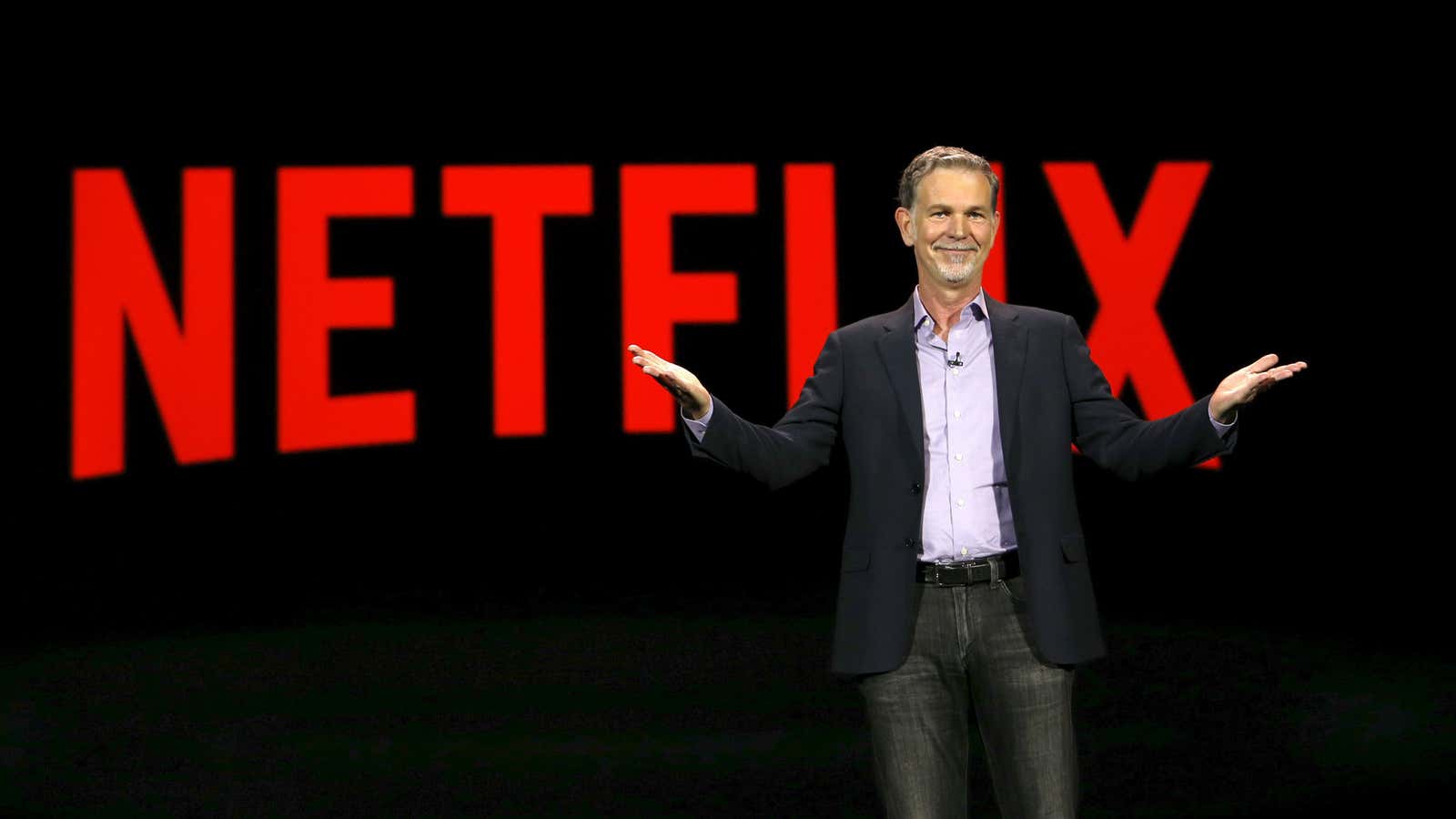The reign of cable television is officially over.
The largest cable-TV providers in the US now have fewer combined subscribers than the streaming service Netflix. At the end of March 2017, cable TV had a combined 48.6 million subscribers in the US, versus 50.9 million at Netflix, according to data from Statista and Leichtman Research Group, which tracked major cable-TV operators including Comcast, Charter, Altice, Mediacom, and Cable ONE.
If other major streaming services, like Hulu, which had 12 million paying subscribers as of last May, were included, streaming’s lead over cable would be starker.
Netflix and other subscription-video-on-demand platforms are significantly cheaper than cable TV. The standard Netflix package costs $9.99 a month in the US, while the average expanded basic-cable package, which includes broadcast and standard cable channels like Fox News and ESPN, goes for $69.03 a month (pdf).
Some people buy Netflix as well as pay-TV. And providers like Comcast let customers access Netflix through their set-top boxes.
Netflix’s US subscriber base still pales in comparison to the broader pay-TV market, which includes satellite operators like DirecTV and Dish Network, TV services from phone companies like Verizon Fios, and internet-TV services such as SlingTV and DirecTV Now.
But Netflix’s subscriber base is still climbing, while the pay-TV market is shrinking. As a whole, the top pay-TV operators tracked by Leichtman, which represented roughly 95% of US subscribers, had 93.3 million subscribers in the first quarter of 2017—a 1% dip from the same period a year earlier.
TV isn’t the only market that Netflix and streaming rivals like Amazon Prime Video are upending. They’re also competing with cinemas with made-for-streaming movies—only some of which run in theaters.
The US subscription-video-on-demand market, made up of players like Netflix, Amazon Prime, and Hulu, is expected to overtake the country’s cinema industry in terms of annual revenue by 2019, PricewaterhouseCoopers said in its annual media outlook report this month.
